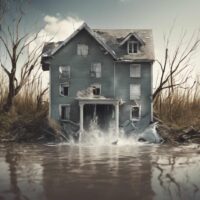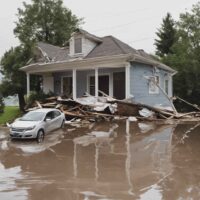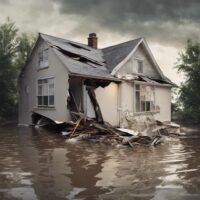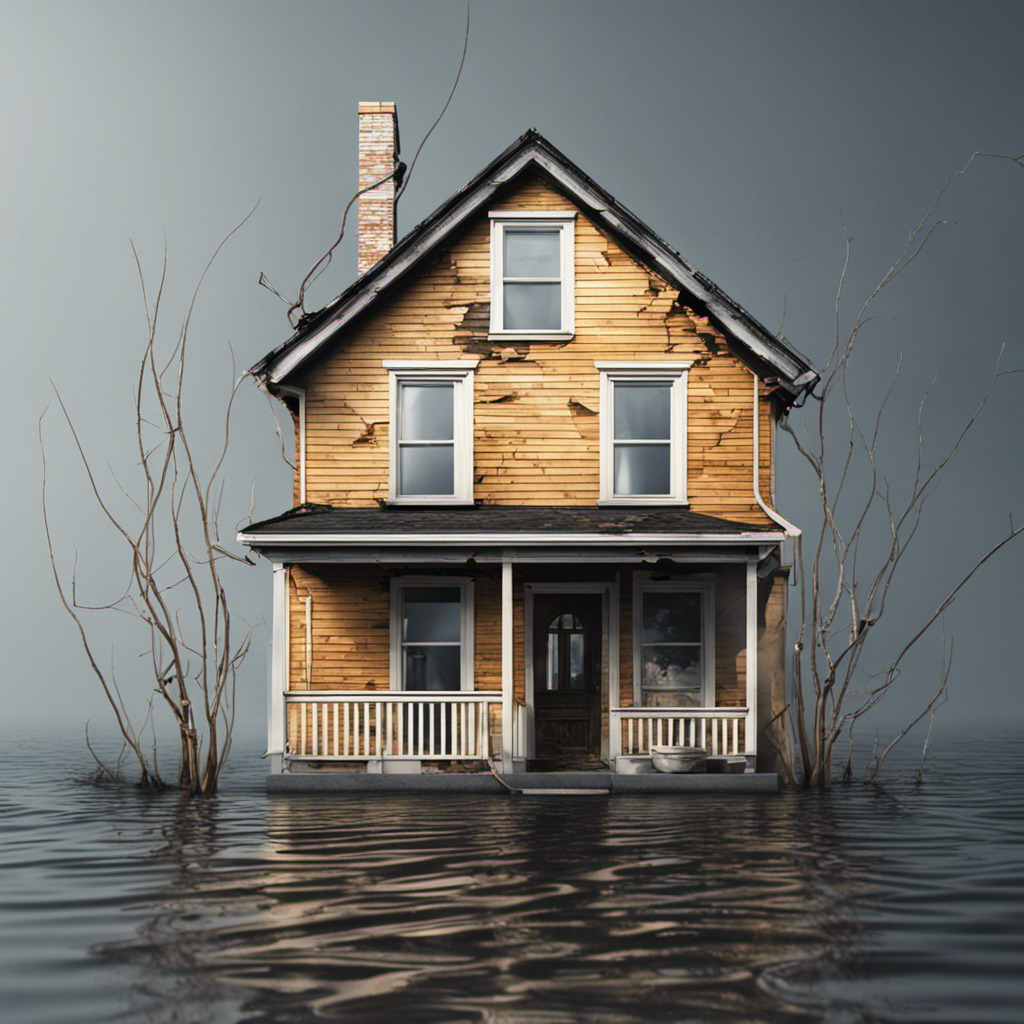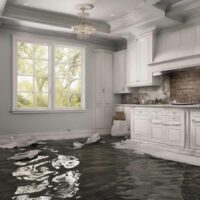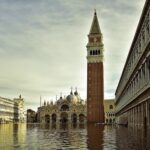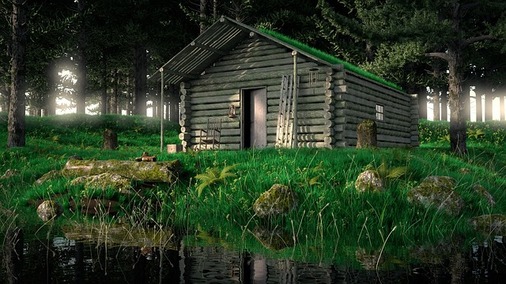
Your house, tucked away in the peaceful embrace of a lakeside, is a haven of peace. However, being close to the water presents a different set of difficulties, and protecting your lakeside retreat from water damage becomes crucial to maintaining its dreamlike appearance.
This guide is your partner in the effort to protect your lakefront property; it provides a plethora of practical advice that strikes a balance between simplicity and effectiveness. Each section, which covers everything from shoreline protection to structural fortification, represents a new chapter in the tale of creating your lakefront paradise. Together, let us go on this preventive journey, where the sound of the lake meets the resiliency of a well-guarded home.
Living by the lake brings to mind tranquil mornings, soft waves, and being surrounded by the natural world. However, this allure is accompanied by the duty of safeguarding your property from the possible dangers of water. This guide is not just a how-to book; it is a promise to arm you with the information required to prevent water damage to your lakeside retreat and preserve its beauty for future generations.
See also our post on 15 Important Water Damage Restoration Tips
Understanding Lakeside Dynamics
Comprehending the dynamics of lakeside environments is fundamental to effective prevention.
Lakeside Dynamics:
- Shoreline Erosion Awareness: Understand the factors contributing to shoreline erosion, such as wave action, fluctuating water levels, and weather patterns.
- Water Level Fluctuations: Be aware of potential water level fluctuations in the lake. These fluctuations can impact the stability of your shoreline and structures.
- Soil Composition Consideration: Assess the soil composition around your property. Sandy soils are more prone to erosion, while clay soils may lead to water runoff issues.
- Impact of Vegetation: Recognize the role of vegetation in stabilizing the shoreline. Plant roots can help prevent erosion and enhance the resilience of the lakeside ecosystem.
- Weather Pattern Understanding: Stay informed about local weather patterns, including storms and heavy rainfall. Sudden weather events can significantly affect your lakeside property.
Shoreline Protection Measures
Implementing effective shoreline protection is key to preventing water damage in lakeside properties.
Shoreline Protection Strategies:
- Installation of Riprap: Consider the installation of riprap, which involves placing large rocks or stones along the shoreline. Riprap absorbs wave energy and helps prevent erosion.
- Use of Vegetative Buffers: Plant native vegetation along the shoreline to create a vegetative buffer. This buffer absorbs water, prevents runoff, and stabilizes the soil.
- Terracing on Sloped Areas: If your lakeside property has sloped areas, implement terracing. Terracing helps control water flow and reduces the risk of soil erosion.
- Placement of Breakwaters: Install breakwaters strategically. Breakwaters are structures that disrupt wave action, protecting the shoreline from erosion.
- Regular Monitoring and Maintenance: Regularly monitor the condition of your shoreline protection measures. Promptly address any signs of wear, damage, or displacement.
Structural Fortifications for Lakeside Homes
Strengthening the structural integrity of your lakeside home is vital for preventing water damage.
Structural Fortification Techniques:
- Elevated Foundations: If feasible, consider elevating the foundation of your lakeside home. This minimizes the risk of flooding during periods of high water levels.
- Water-Resistant Sealants: Apply water-resistant sealants to exterior surfaces, including walls and foundations. These sealants create a barrier against water infiltration.
- Proper Drainage Systems: Ensure effective drainage around your home. Well-designed drainage systems direct water away from the foundation, preventing water accumulation.
- Regular Roof Inspections: Conduct regular inspections of your roof. Leaks can lead to water damage, and prompt repairs are crucial to maintaining a watertight structure.
- Investment in Quality Windows and Doors: Opt for high-quality, water-resistant windows and doors. Proper seals and materials that withstand exposure to moisture are essential.
See also our post on Detailed Water Damage Restoration Checklist
Landscaping Practices for Water Resilience
Strategic landscaping enhances the resilience of your lakeside property against water damage.
Water-Resilient Landscaping:
- Selection of Native Plants: Choose native plants that are adapted to the local climate and water conditions. Native vegetation requires less maintenance and contributes to soil stability.
- Proper Grading Around Structures: Ensure proper grading around your home. Sloping the land away from structures helps prevent water from pooling around foundations.
- Mulching for Soil Conservation: Apply mulch around plants to conserve soil moisture and prevent erosion. Mulch acts as a protective layer, shielding the soil from the impact of rain.
- Strategic Placement of Vegetation: Strategically place trees and shrubs to act as windbreaks. Windbreaks reduce wind-induced water spray and help protect structures.
- Rain Gardens for Natural Absorption: Incorporate rain gardens into your landscaping. Rain gardens use native plants to absorb and filter rainwater, reducing runoff.
Monitoring and Early Detection
Vigilant monitoring and early detection are crucial components of water damage prevention.
Early Detection Strategies:
- Regular Property Inspections: Conduct regular inspections of your lakeside property. Look for signs of erosion, changes in water levels, or structural issues.
- Utilization of Technology: Leverage technology such as lake level sensors and weather monitoring tools. These tools provide real-time data to help you anticipate and respond to changing conditions.
- Prompt Response to Warning Signs: Act promptly when you observe warning signs. Addressing issues in their early stages can prevent more significant problems down the line.
- Professional Inspections: Engage professionals for regular inspections of critical areas, such as the foundation, shoreline protection, and roofing. Professional insights can uncover hidden vulnerabilities.
- Community Awareness and Reporting: Foster a sense of community awareness. Encourage neighbors to report any unusual changes or signs of water-related issues, creating a collective effort toward prevention.
Responsible Water Use and Conservation
Promoting responsible water use contributes to both environmental sustainability and property protection.
Water Conservation Practices:
- Efficient Irrigation Systems: Install efficient irrigation systems that deliver water directly to plant roots. This minimizes water wastage and promotes healthier vegetation.
- Collecting Rainwater: Harness the power of rain by installing rain barrels. Collected rainwater can be used for watering plants, reducing the demand on external water sources.
- Appropriate Watering Schedule: Establish a watering schedule that aligns with the needs of your landscaping. Avoid overwatering, which can lead to soil erosion and nutrient leaching.
- Permeable Surfaces: Opt for permeable paving materials for driveways and walkways. This allows water to penetrate the soil instead of running off, promoting groundwater recharge.
- Education on Water Conservation: Educate yourself and your community on water conservation practices. Small changes collectively make a significant impact on overall water use.
Emergency Preparedness and Response
Preparation for potential water-related emergencies is a crucial aspect of lakeside property management.
Emergency Preparedness Measures:
- Emergency Kits: Assemble emergency kits that include essentials such as first aid supplies, flashlights, and important documents. Store these kits in easily accessible locations.
- Evacuation Plans: Develop and discuss evacuation plans with household members. Know the evacuation routes and have a designated meeting point.
- Communication Strategies: Establish communication strategies for emergencies. Ensure everyone in the household knows how to contact each other and receive emergency alerts.
- Understanding Flood Insurance: Familiarize yourself with flood insurance options. Evaluate whether your property is at risk and consider investing in appropriate coverage.
- Cooperation with Local Authorities: Collaborate with local authorities on emergency preparedness. Stay informed about community emergency plans and participate in drills.
See also our post on Professional Water Damage Restoration Services, West Lake Hill, TX
Conclusion
A delicate balancing act of awareness, planning, and action, preventing water damage is an art in the tapestry of lakeside living. From knowing the ins and outs of lakeside environments to strengthening your house and growing water-resistant landscaping, every aspect of prevention plays a part in extending the life of your lakeside haven.
As you set out on this adventure, may the waves of the lake reflect the tenacity of your endeavors. By virtue of your dedication to prevention, your lakefront property becomes more than just a house; it becomes a symbol of the peaceful coexistence of human habitation and the soft embrace of nature.
